|
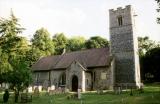 
The Church in the Forest otherwise known as St. Mary the Virgin Santon Downham is set in a most tranquil spot on the edge of the forest at the end of a large village green. There are regular services held here every Sunday at 9.30. The first and fourth of each month being a family service, Eucharist is held on the second and third Sunday and the fifth is a rotational service between St. Peters, Brandon, and St.Peter and St. Patrick, Elveden. There is a thriving Church community in this small village with many villagers helping to keep it that way - from the daily jobs such as unlocking the church, to the weekly jobs; flowers and cleaning, to the seasonal jobs such as cooking for and hosting the church teas on Sundays throughout the summer months, and finally the menfolk who willingly volunteer to mow the grass during the summer months!
|
|
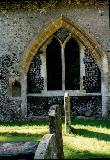 
 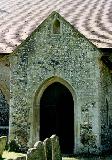
The Domesday Survey of 1086 notes the existence of a church in the village, most probably wooden and replaced by the present one. The church has a nave, chancel, north porch and a tower. The oldest part of the church is the western part of the nave, which is clearly Norman and dates from the 12th century. It has very thick walls and two doorways and windows facing each other. On the inside, each window characteristically displays round headed splays, these were later disguised/updated on the outside with pointed lancets.
This little church contains some fascinating anomalies: next to the North porch outside, there is evidence of an additional or most probably an earlier Trinity chapel; there is an arch filled with knapped flint and to the east a very well preserved piscina. The little niche above the door in the porch is off centre, indicating that the much thicker east wall of the porch was originally the West side of this chapel, probably destroyed during the Reformation.
The North porch; notice the off centre niche above the door in which a figure of the Virgin Mary, to whom the church is dedicated, would have been housed.
|
|
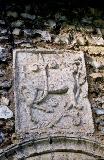 
 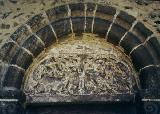
Above the South doorway there is a carved stone panel depicting what could be a wolf (symbolising evil) devouring the tree of life, which, indestructible sprouts from the wolf's tail - symbolic of the Resurrection?
Secondly on two Capitals in the North transept of Ely Cathedral - contemporary work and also in the detailed carvings around the Prior's (head monk's) Door on the South side see below.
More information on the church can be found at The Corpus of Romanesque Sculpture
|
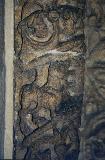 
|
|
|
|
|
|
|
|
|
|
|
Copyright 2016 TJKSoftware,Icehouse Media, ~ designed & maintained by
TJKSoftware

